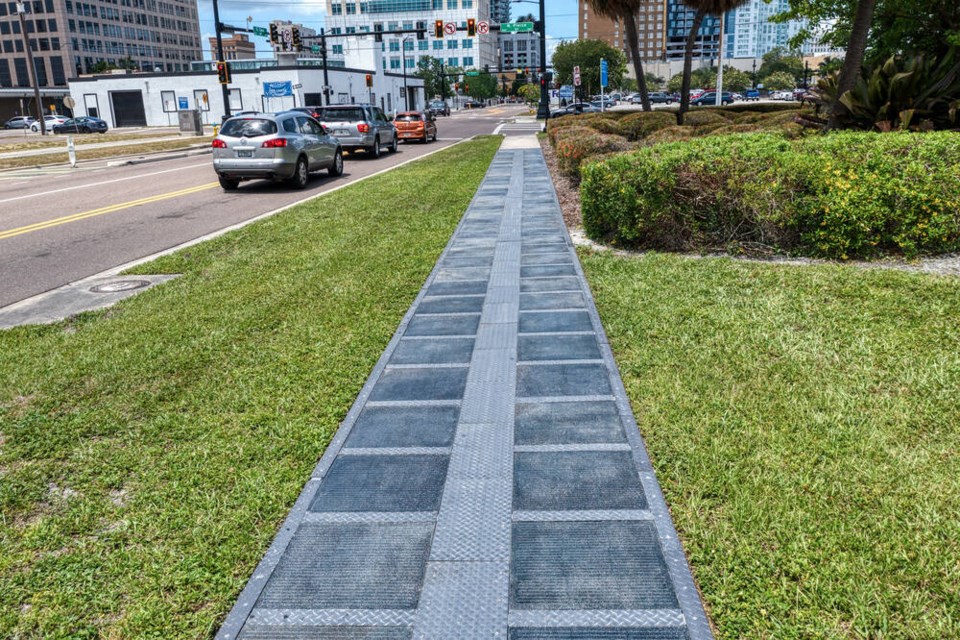The Malahat First Nation will take a step toward energy independence this year with the installation of a solar energy system to power its administration facility.
The system, supported by a $200,000 grant from the B.C. Indigenous Clean Energy Initiative, is expected to ensure the power will never go out in the First Nation’s administration building.
The pilot project is a partnership with Vancouver-based companies Shift Clean Energy and Solar Earth Technologies.
It’s also the first project where a Shift energy-storage system will be applied on land, capturing and storing energy from the sun through technology embedded in sidewalks, roadways, parking lots and other paved surfaces. Previously, the company was focused on the marine transport sector.
Once the installation is complete, the Malahat Nation’s administration building is expected to be capable of running off-grid at nearly full capacity.
“This is actually multiple pilot projects rolled into one,” said Tristan Gale, Malahat’s executive director of environment and sustainable development.
“Using Shift’s batteries on land is a pilot, using Solar Earth’s technology in this specific climate, in this specific situation is a pilot, and then tying that all together with microgrid functionality so that it is as automated as possible when we lose grid power is its own pilot project. So, it’s definitely a first in a couple of specific categories.”
The project is expected to save an estimated 18,300 kilograms of carbon emissions over 25 years.
Gale said the pilot is driven by the availability of funding from the Indigenous Clean Energy Initiative as well as the Malahat First Nation’s goal to become a more sustainable community.
“The Malahat’s values of taking what the land is offering, including the solar energy that’s available, and using that to progress the presence of Malahat Nation,” he said. “Any Indigenous government probably has some experience with having control exerted over them by external entities, and while that’s not the sole focus of this, it is certainly important for Malahat to develop another option should B.C. Hydro make decisions that don’t align with where Malahat wants to go in the future.”
Discussions are underway on developing a renewable energy microgrid that would move the Malahat First Nation toward complete energy independence.
Colin Doylend, Solar Earth’s vice-president of business development, said the company can scale up to whatever the Malahat needs.
“We are basically showing how we can convert typical concrete hardscape and put the solar panel on top of it — you can basically drive on top of it, it can take a beating,” he said. “That means you can monetize a hardscape that was typically a sunk cost to a municipality or a developer.”
Doylend said if, for example, they were able to “solarize” all of Los Angeles’s 17,000 kilometres of sidewalks, they could generate 77 per cent of the total energy needs for that city.
For the Malahat project, Solar Earth plans a mix of traditional solar on the roof with its hardened, paving-integrated solar panels on the hardscape.
Brent Perry, chief executive of Shift, said the first project is small but will be an opportunity to showcase that the microgrid works, and that the ability to store renewable energy means power will be available when the sun doesn’t shine.
“That gives the operators and the customers a lot more confidence in using energy storage like this,” he said. “This first system is really designed as a proof of performance capability system and it scales from that to the point we literally could run the entire First Nations facility, all of their lands, off renewable energy.”
The project is expected to get underway within the next month.



